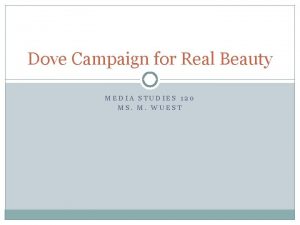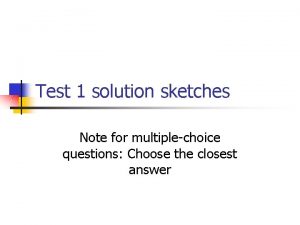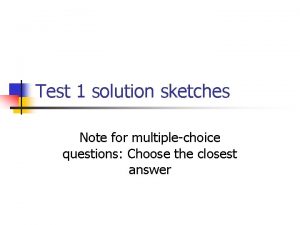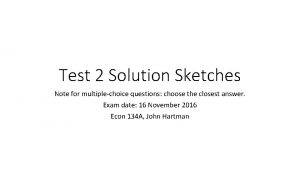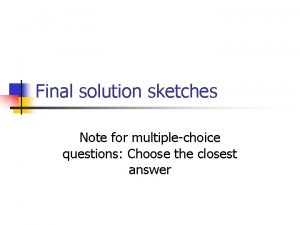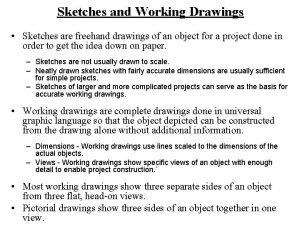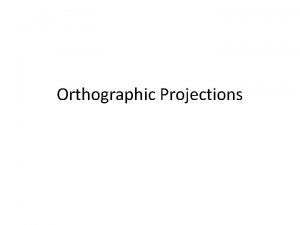Test 2 Solution Sketches Note for multiplechoice questions








- Slides: 8

Test 2 Solution Sketches Note for multiple-choice questions: choose the closest answer. Exam date: 29 February 2016 Econ 134 A, John Hartman

1. Multiple choice • The face value of a bond is $5, 000. Annual coupons equal to 10% of the face value will be paid once per year starting one year from today, and the bond will mature 9 years from today. The bond currently sells for $4, 600. Which of the following must be true about the yield to maturity? • The price of a bond and the interest rate have an inverse relationship. As price of the bond falls, the yield to maturity (effective interest rate) must be increasing. So the YTM must be strictly greater than 10% (c).

2. Multiple choice •

3. CAPM •

4. CAPM •

5. IRR • A project has a cash inflow today, a cash outflow one year from today, and a cash inflow two years from today. (Note that a cash outflow means you have to pay money and a cash inflow means you receive money. ) Two internal rates are found, 13% and 40%. Darryl is trying to determine whether or not net present values (NPVs) are positive for 5%, 20%, and 60% discount rates. For which of these three discount rates will the NPV be positive? • (e) 5% and 60% only 5% 60% 13% 40%

6. Free response •

7. Free response CAPM statistics • There are three known states of the world, each with one-third probability of occurring: Good, Bad, and Ugly. When times are Good, Stock X has a rate of return of 40%, and stock Y has a rate of return of 4%. When times are Bad, Stock X has a rate of return of 10% and Stock Y has a rate of return of 3%. When times are Ugly, Stock X has a rate of return of – 20% and Stock Y has a rate of return of 20%. What is the correlation of Stock X and Y’s rate of return?
